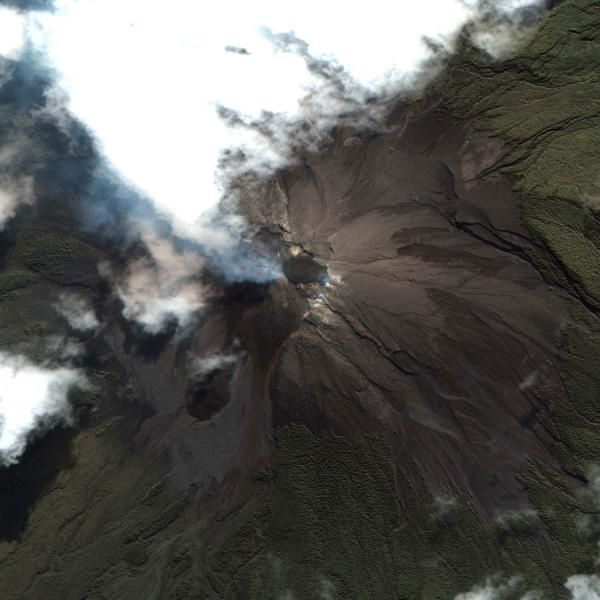
Merapi's Latest Eruption Pushes Death Toll to 156

Mount Merapi, the central Indonesian volcano that began erupting on Oct. 26, continued its streak of eruptions over the weekend, pushing the death toll from its deadly blasts even higher.
As of Sunday, Merapi's recent explosive blasts have killed 156 people, a doctor at Indonesia's Sardjito hospital told CNN.
Scorching flows of gas and rock — called pyroclastic flows — that spew during each eruption were seen on Merapi's southern slopes just before midnight Friday at speeds of up to 60 mph (97 kph). Two more flows sped down the volcano on Sunday and a hot ash cloud that hit a village near the crater was approximately 842 to 1,112 degrees Fahrenheit (450 to 600 degrees Celsius), CNN reported.
Danger zone wider
Mount Merapi's danger zone has been extended by three miles to 12 miles (4.8 to 19 km) from the crater's smoldering mouth after the new eruption, a state volcanologist told the Associated Press.
The eruptions have triggered mass evacuations near Merapi. After reports of rumblings near 21 other volcanoes in the region, many feared that a chain reaction of volcanic eruptions was imminent. While that isn't likely, geologists have said, Merapi itself may continue to erupt for some time.
"I don't want to speculate if there's going to be a bigger eruption," Syamsu Rizal, a state expert on volcanoes, told the Associated Press. "But there's no indication at this stage that we're going to see it quiet down at all in the near future." [Q&A: Will Merapi stop erupting any time soon?]
Sign up for the Live Science daily newsletter now
Get the world’s most fascinating discoveries delivered straight to your inbox.
Ring of fire
As the world's largest archipelago — made up of 17,500 islands, with 235 million people spread across them — Indonesia sits between the world's most active seismic region, the notorious Pacific Ring of Fire, and the world's second most active region, the Alpide belt. Sandwiched between the two earthquake belts, the islands experience some of the most powerful volcanic eruptions and strongest quakes on Earth.
Merapi's deadly eruptions continue as Indonesia struggles to recover from a 7.7-magnitude earthquake that triggered a 10-foot (3-meter) tsunami. The earthquake resulted from the subduction of the Earth's rocky plates below another (a process called thrust faulting). [Related: Why Do Some Earthquakes Cause Tsunamis But Others Don't?]
Indonesia is home to 129 active volcanoes. The two most active ones — Mounts Kelut and Merapi (meaning "mountain of fire") — sit on the island of Java, which also contains the Indonesian capital of Jakarta, roughly 310 miles (500 kilometers) northwest of them.
Mount Merapi last erupted in 2006, killing two, but its violent history includes more than 1,300 people that were killed in a 1930 eruption and possibly 70 killed in a 1994 eruption.
- The World's Five Most Active Volcanoes
- Eruption on Indonesia Fans Public's Fears of Chain Reaction
- Indonesia's Explosive Geology Explained
Brett Israel is a staff writer for OurAmazingPlanet, a sister site to LiveScience.












